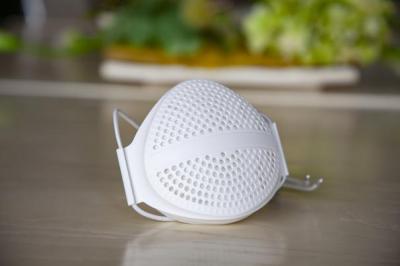
Create Time: 01/23/2019
Customers who purchase 3D printing hardware but who primarily print small models or only use the device occasionally are often faced with the problem of using too much resin. For our SLA450 model, for example, it is necessary to fill it up with 125 to 130 kg of resin before it will operate correctly. For the larger SLA600 model even more is required, up to 200 kg. This is simply not practical for those who only need a very small amount of resin to cover their printing needs.
To solve this issue, FrotoFab has developed two solutions.
The purpose of using an insert is to block off part of the vat so that less resin is required to fill it. We first produce a drawing in PTC Creo, matching the exact requirements of the customer. Once an insert is produced, it then undergoes extensive finishing to ensure it is exactly the correct size and there are no sharp edges. Using an insert like this can substantially reduce the amount of resin required, from as high as 200 kg down to something more manageable like 60 kg, or lower if necessary. The customer can add or remove inserts to adjust the amount of resin required at any given time. Typically we send out around 6 or 7 sinks, allowing for a high degree of flexibility.

A custom designed insert

Made from high-quality stainless steel, the edges are polished down to remove any sharpness.

This CAD image shows several inserts placed inside the material vat. The shallower the vat becomes, the less resin is required.
This solution has proven to be highly popular with customers and we have had positive feedback from long-term users.
This is a more direct and permanent solution. Customers can ask for a vat of a specific depth specially designed for them. The length and width remains unchanged, but adjustments to the depth will lead to different volumes of resin.

Here we can see a custom-depth material vat. The depth has been altered from the usual 300 mm to 158 mm, leading to much lower resin use.
Of course, this method is significantly less flexible than adding and removing inserts, so in most cases customers will use solution 1. However, there are some customers with special requirements who prefer solution 2.
Despite these solutions being available, it's important to note that if you are certain you will only need to produce small models it's better to purchase one of our smaller printers, for example the SLA150 or SLA 300. These come with smaller material vats to begin with and therefore remove the need for additional solutions. However, the drawback of these smaller printers is that they are unable to print larger objects, so are more restrictive. Customers are welcome to get in touch with us with details of models they plan to produce and how often they expect to use the printer. We can then recommend the best solution for each individual case, whether that be a larger printer using inserts or one of our smaller printers.





